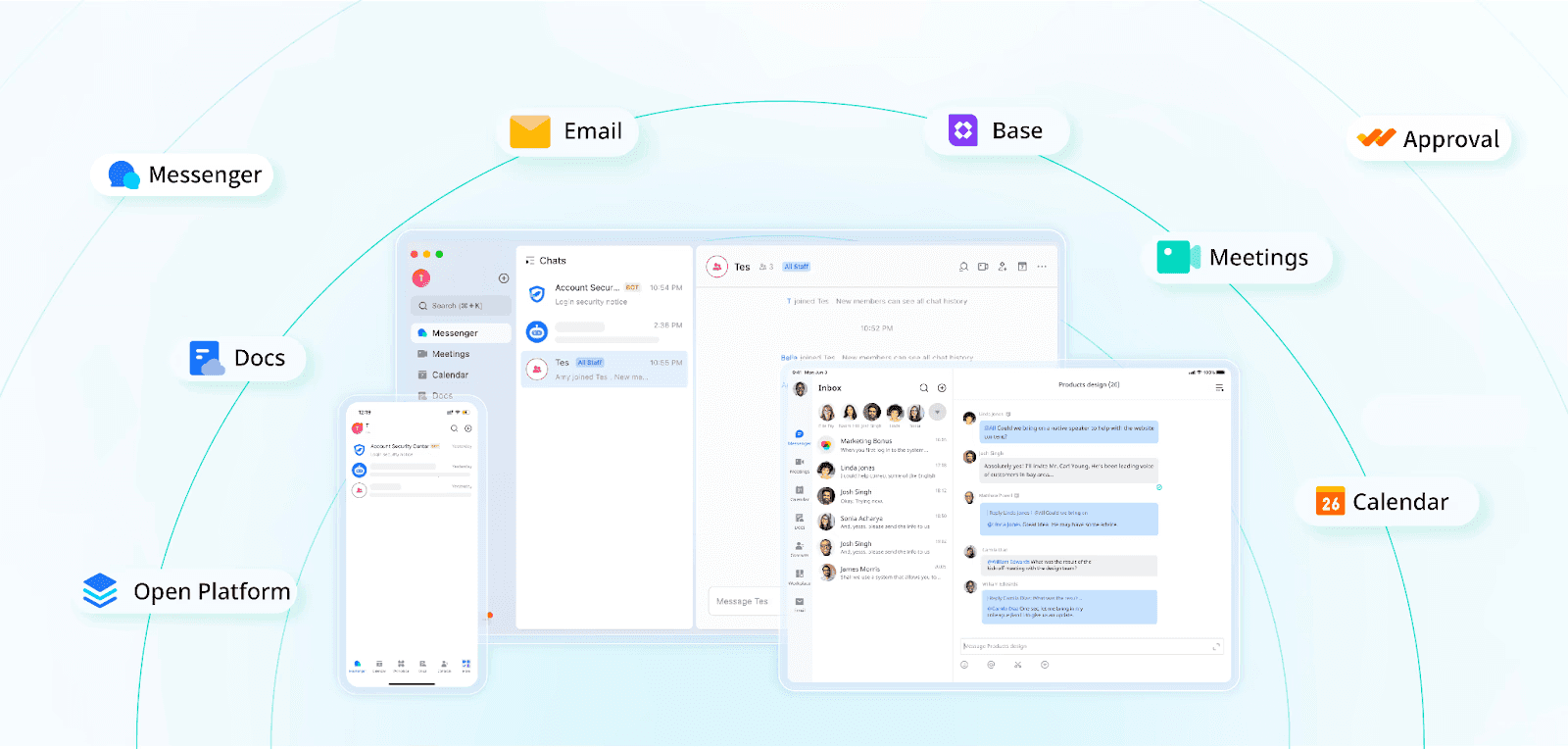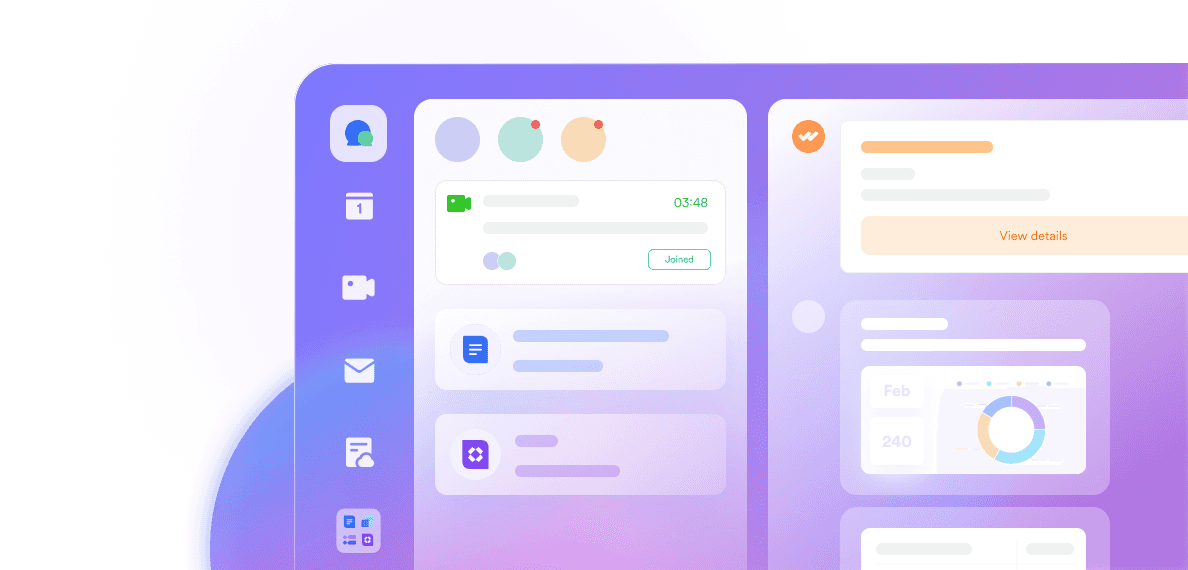Digital Asset Management Library (DAM Library) is all about taking control of your digital content, transforming chaos into order. As organizations create an ever-growing library of images, videos, and documents, having a structured approach to managing these assets is crucial. A well-implemented DAM solution not only streamlines workflows but also ensures that teams can easily access and collaborate on the latest materials. In this article, we’ll dive into the essentials of digital asset management libraries, explore their benefits, and provide insights on how to choose the right solution for your organization’s needs.
As you consider your options, we invite you to explore various digital asset management solutions, including Lark, to enhance your asset management practices. By implementing an effective DAM Library, businesses can protect their valuable digital assets while enabling their teams to work more efficiently and collaboratively.
What is a digital asset management library?
Digital asset management library is a comprehensive system designed to organize, store, and retrieve digital assets efficiently. At its core, the DAM Library serves as a centralized repository where businesses can manage their valuable digital content, ensuring that assets are easily accessible, properly categorized, and securely stored. The role of the DAM Library goes beyond mere storage; it facilitates better collaboration among teams, enhances the effectiveness of marketing campaigns, and ensures brand consistency across various platforms.
Digital assets encompass a diverse range of content types that organizations regularly handle. Some of the most common types of digital assets managed through a DAM system include:
Images: High-resolution photographs, graphics, logos, and illustrations that are utilized across marketing and branding efforts.
Videos: Promotional content, tutorials, product demos, and event recordings that require efficient organization for easy retrieval and distribution.
Documents: Files such as PDFs, word processing documents, spreadsheets, and presentations that contain important information and resources.
Audio files: Music tracks, sound effects, and voiceovers used in various projects, including podcasts and multimedia presentations.
Creative files: Source files from design software, including vector graphics and layouts, needed for ongoing design projects.
Web content: Content created for websites and blogs, including articles, infographics, and landing pages that need to be managed and updated regularly.
Social media assets: Tailored graphics, videos, and captions specifically designed for various social media platforms to engage users effectively.
Animations and 3D models: Dynamic content such as animated videos and three-dimensional visualizations used in marketing or product showcases.
By consolidating these diverse types of assets into a single digital asset management library, organizations can streamline their operations, promote collaboration, and maximize the value of their digital content.
Who can benefit from a digital asset management library?
Digital asset management library solutions provide significant value to various industries and roles, streamlining operations and enhancing collaboration across different functions. Here are some key sectors and teams that can benefit from implementing a DAM Library system:
Benefits: Marketing professionals can easily access a centralized repository of brand assets, ensuring consistency in messaging and visual identity. Quick retrieval of images, videos, and promotional materials helps them launch campaigns more efficiently and respond to market trends rapidly.
Leveraging DAM library: By utilizing advanced tagging and search capabilities, marketers can quickly find the right assets for specific campaigns, saving time and reducing the risk of using outdated or incorrect materials.
Benefits: Schools and training organizations can use DAM Library systems to manage course materials, multimedia teaching resources, and student work, facilitating information sharing between educators and learners.
Leveraging DAM library: By centralizing educational resources, institutions can effectively conduct courses and streamline the distribution of materials, enhancing teaching efficiency.
Media and entertainment industry:
Benefits: Media companies and entertainment production organizations need to manage a large volume of audio, video, and image content. DAM Library systems assist in tracking copyright information, managing digital assets, and protecting intellectual property.
Leveraging DAM library: These organizations can efficiently manage the lifecycle of their content, from creation to release, reducing risks and accelerating content access.
By implementing digital asset management library solutions, these different industries and teams can improve efficiency, foster collaboration, and maximize the value of their digital assets, leading to greater success within their respective fields.
Core functions of a digital asset management solution
Digital asset management solutions provide essential functionalities that enhance asset management and streamline workflows. Here are the core functions:
Centralized storage and organization of assets
Functionality: A DAM system centralizes all digital assets (images, videos, documents) in one repository, organized by categories or tags.
Workflow contribution: This centralization reduces the time spent searching for files, ensuring quick access to up-to-date resources.
Advanced search capabilities
Functionality: Users can find assets using keywords, metadata, and tags, making the search process efficient.
Workflow contribution: Advanced search significantly decreases the time needed to locate files, allowing for faster project completion.
Version control and asset tracking
Functionality: This feature tracks all changes made to assets, providing a complete history and allowing users to revert to previous versions.
Workflow contribution: Version control prevents errors by ensuring teams use the latest assets and enhances accountability through tracking.
Collaboration tools for team members
Functionality: Tools for commenting, annotating, and sharing enhance team interaction directly within the platform.
Workflow contribution: Real-time collaboration reduces communication gaps, speeds up the review process, and improves overall project quality.
These features collectively lead to improved efficiency and productivity. By centralizing assets, enabling advanced search, ensuring version control, and facilitating collaboration, DAM solutions help teams deliver high-quality results quickly and consistently.
Benefits of using digital asset management software
Implementing digital asset management software offers several key advantages that can significantly enhance an organization’s efficiency and effectiveness. Here are the primary benefits:
Improved productivity through easy access to assets:
Advantage: DAM software provides centralized access to digital assets, allowing team members to quickly find and use the resources they need without sifting through disorganized file structures.
Tangible outcomes: This easy access leads to faster project turnaround times, as employees spend less time searching for assets and more time focusing on their core tasks. Enhanced productivity can result in increased output and revenue generation.
Enhanced brand consistency with controlled asset usage:
Advantage: With a DAM system, organizations can control which assets are used and how they are utilized, ensuring that branding and messaging remain consistent across all channels.
Tangible outcomes: Consistent branding builds trust and recognition with customers, ultimately leading to improved customer loyalty and potentially higher sales. It minimizes the risk of using outdated or incorrect materials, protecting the brand's integrity.
Better collaboration among team members:
Advantage: DAM software facilitates seamless collaboration by allowing team members to share assets, provide feedback, and track changes in real time within a single platform.
Tangible outcomes: Improved collaboration leads to faster decision-making and a more streamlined creative process. Teams can innovate more effectively, resulting in higher-quality outputs and the ability to respond rapidly to market demands.
Increased security and compliance for sensitive materials:
Advantage: DAM systems offer robust security features such as user permissions, encryption, and audit trails, ensuring that sensitive materials are protected and compliance requirements are met.
Tangible outcomes: Enhanced security reduces the risk of data breaches and unauthorized access, protecting the organization’s intellectual property and reducing legal liabilities. This increases stakeholder confidence and can lead to a better reputation in the market.
Choosing the most suitable digital asset library software
When selecting the best digital asset management software for your organization, consider the following key factors:
Assessing your specific needs and goals: Understand the types of assets you manage, your goals, and the specific problems you aim to address with a DAM system.
Comparing features and functionalities of various solutions: Review the capabilities of different DAM solutions, particularly those that meet your essential requirements.
Considering scalability and integration with existing tools: Choose a solution that can scale as your organization grows and integrates seamlessly with your existing tools.
Evaluating user experience and support options: Ensure the software is user-friendly and understand the support and training resources provided by the vendor.
Digital asset library software list
Here are some noteworthy digital asset management software solutions to consider:
Bynder

Image source: bynder.com
Bynder is a powerful digital asset management platform that enables brands to deliver exceptional content experiences across various channels. It unifies the creation, management, and distribution of marketing assets, ensuring consistency and efficiency.
Key features
Organize and find your files easily: An intuitive filtering system allows users to quickly locate and manage digital assets tailored to their specific needs.
Control access and usage rights: Brand reputation is safeguarded through access permissions, ensuring that users only see relevant assets and reducing the risk of unauthorized content publication.
Share files internally and externally: Users can securely share assets directly from the DAM system, with control over usage through expiration dates and tracking of sharing history.
Lark

Lark is an advanced, seamless collaboration and management platform that incorporates features such as Base, Docs, Wiki, and a smart Messenger, providing comprehensive support for teams. As an ideal complement to digital asset management, Lark simplifies the creation, sharing, and management of digital assets through its powerful tools.
Key features
Centralized storage and seamless collaboration: Lark provides a unified platform for teams to effortlessly create, edit, and share digital assets. With centralized storage, all relevant materials are easily accessible, enabling real-time collaboration and rapid feedback among team members.
Customizable data tracking and analytics: The platform offers versatile data management tools, allowing teams to track and analyze metrics related to their digital assets. Users can create customized views and dashboards to monitor performance and usage, facilitating informed decision-making.
Granular access control and security features: Lark includes robust security protocols that enable organizations to set precise access permissions for digital assets. This ensures that sensitive information is protected while allowing collaboration, as only authorized individuals can access critical content.
Brandfolder

Image source: brandfolder.com
Brandfolder is a powerful digital asset management software designed to help marketers and creatives manage, distribute, and analyze their assets effectively. It enables organizations to maximize the value of their content and creative assets across various formats, including 8K video, documents, images, and 3D. Here are three key features:
Key features
Organize & search: Visually appealing and intuitive, Brandfolder reduces your search time and helps you quickly find assets. Manage hundreds or thousands of assets effortlessly with collections, sections, labels, and Brand Intelligence enhanced search.
Control & automate: Empower stakeholders and free up creative resources. Content automation allows you to create and export branded templates, and easy cropping and resizing ensure teams can express your brand safely and efficiently.
Create & deliver: Streamline the creative process and eliminate bottlenecks. Brandfolder provides workflow tools to ensure alignment from concept to delivery, with seamless integration into your favorite creative tools like Adobe Creative Cloud and Figma.
Adobe Experience Manager Assets

Image source: business.adobe.com
Adobe Experience Manager Assets is a customizable digital asset management system that lets you easily discover, govern, and activate millions of assets so you can deliver and scale personalized experiences.
Key features
User-friendly asset management: Easily ingest, organize, and classify millions of assets for quick access, ensuring you can efficiently locate the resources needed for your projects or campaigns.
Advanced governance and compliance: Implement permissions and digital rights management to guarantee legal and brand compliance regarding content usage.
Asset optimization and activation: Access, transform, and deliver assets seamlessly across various channels to provide customers with the highest quality experiences.
Frontify

Image source: frontify.com
Frontify is a robust brand management platform that enhances brand consistency and creativity by organizing, tagging, and tracking all brand assets. Its integrated digital asset management system transforms brand files into valuable resources that streamline collaboration across teams.
Key features
Organization and efficiency: Advanced metadata and multi-brand capabilities simplify the management and sharing of assets, improving operational efficiency.
Consistency and governance: Built-in brand governance features, such as version control and approval workflows, ensure brand integrity and agility.
Workflows and collaboration: Flexible user permissions and secure sharing options allow organizations to manage access, fostering collaboration while protecting sensitive materials.
Canto

Image source: canto.com
Canto is a digital asset management platform that facilitates collaboration on digital content for both internal and external teams. Its AI visual search feature allows users to quickly find assets by describing their needs, even if the content is untagged.
Key Features
AI visual search: Quickly locate digital assets by describing them, enhancing content discovery.
Media delivery cloud: Publish digital content seamlessly from the platform.
Integrations: Canto serves as the hub of your content toolkit, integrating with tools used throughout the content lifecycle to streamline workflows for creating, finding, editing, and sharing content.
Dash

Image source: dash.app
Dash is a digital asset management application designed to assist users in efficiently collecting, organizing, searching, storing, and sharing digital content. Its versatility makes it suitable for various business environments, including marketing, design, branding, and e-commerce.
Key features
Collect and store: Easily import visuals from platforms like Drive, Dropbox, and SharePoint. Once uploaded, you can organize assets using folders and tags for quick access.
Search and organize: Utilize advanced features such as object tagging, location-based search, and text recognition within images to efficiently find your content.
Share and collaborate: Share assets via email or a unique URL. Dash fosters teamwork by allowing you to create collections and invite teammates or freelancers, ensuring everyone stays informed and engaged, whether working remotely or in the office.
Razuna

Image source: razuna.com
Razuna is a user-friendly digital asset management platform suitable for both beginners and advanced users. Here are three main features:
Key features
User-friendly interface: Razuna offers an intuitive design that allows for quick adoption and minimal downtime.
Customizable metadata: Users can tailor labels, metadata, and tags to improve the organization and retrieval of digital assets.
Collaboration tools: The platform includes file-sharing options and commenting features to enhance teamwork and communication among users.
Essential practices for securing your digital assets
In digital asset management, security is crucial to protect sensitive content and brand reputation. With the rise of cyber threats and data breaches, organizations must prioritize securing their digital assets to prevent unauthorized access, safeguard intellectual property, and comply with data protection regulations.

Best practices for safeguarding digital assets
Implementing granular access controls: Assign specific roles and permissions to users based on their responsibilities, ensuring that individuals only have access to the assets necessary for their work.
Regularly updating security protocols: Consistently review and enhance security measures to adapt to emerging threats and maintain a strong defense against potential vulnerabilities.
Utilizing cloud storage solutions with strong encryption: Choose cloud storage providers that offer robust encryption for data at rest and in transit, protecting your digital assets from unauthorized access and breaches.
Robust DAM solutions not only streamline asset management but also help organizations maintain compliance with data protection regulations. By centralizing control, providing audit trails, and implementing data handling protocols, these solutions ensure that sensitive information is managed securely and in accordance with legal requirements.
📖 Learn more: Optimizing Your Digital Asset Management Workflow for Maximum Efficiency
Conclusion
In today's digital landscape, a digital asset management library is crucial for organizations relying on various digital assets like images, videos, and documents. This article highlighted the core functions of DAM solutions, including centralized storage, advanced search capabilities, version control, and collaboration tools, which collectively streamline workflows and enhance productivity. We encourage readers to explore different digital asset management solutions, such as Lark, to improve their digital asset management practices. By implementing a robust DAM system, businesses can protect their valuable digital assets while enabling their teams to collaborate more efficiently and effectively.
Table of Contents















